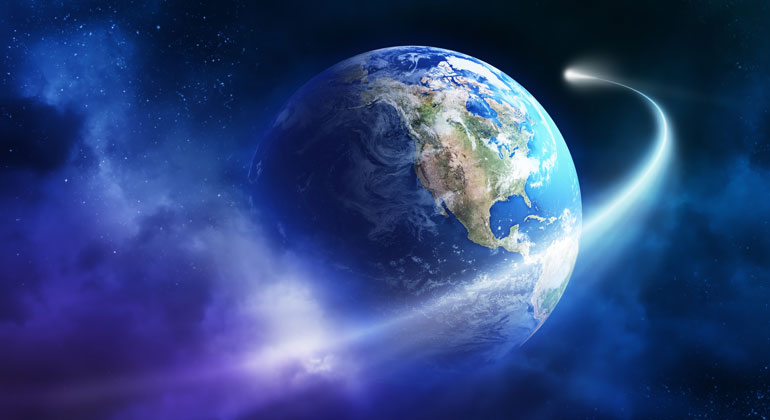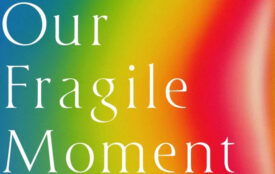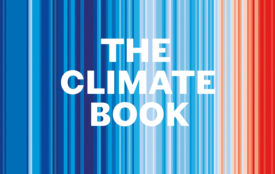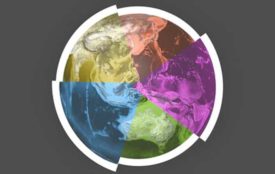A Better Planet – 40 Big Ideas
„Imagine“ – just imagine, somebody would ask you: What could be the most important ideas to ensure a sustainable future? A demanding and illustrative book has appeared on the topic – a first assessment by Professor Udo E. Simonis.
For John Lennon the answer was in form of two basic imaginations: „We need a brotherhood of man; and the people living in peace“. At this time, many worrisome environmental threats and conflicts have to be considered.
In the follow-up of a longer Yale Environment Dialogue, Daniel C. Esty, professor and director of the Yale Center for Law and Policy, recently asked 53 (!) American colleagues the above question – and the final outcome is this book, a book not on two but on 40 (!) big ideas.
In the Introduction, the editor starts from a rather pessimistic position: While America has made great strides in the environmental realm in the past decades, environmental protection in recent years has become an arena for bitter partisan battles. While some progress has been made in addressing the most grievous environmental harms and natural resource losses, the pace of progress has been drastically slowed in recent years. While the theory of pollution control and natural resource management has advanced, the environmental policy practice has not been fundamentally re-thought. Therefore, he thinks the approach to environmental protection needs to be thoroughly modernized.
To begin with, he is very proud to state that an extraordinary collection of thought leaders, environmemtal activists and talented graduate students – spanning a wide range of disciplinary perspectives, issue expertise, and political beliefs – present their ideas for re-igniting environmental progress. They all have been asked to offer concrete suggestions for policy progress and to do so on a basis that could win broad political support. The essays in this volume are thought to provide a menu of innovative suggestions on which America and the world might build over the next decades in re-imagining the response to pollution, land use, natural resources and energy challenges. So, let us have a look at the chapters and some, not all, of the 40 essays.
Esty ordered the book into five parts
Part One is on „Nature, Land, and Water“ – indeed a strategic decision. „Sustaining Humans and Nature as One“, that‘s the message of the first essay. Ecological science teaches us, the author states, that conceiving a sustainable future requires the fundamental appreciation that we (human beings) live on a finite planet that supports a grand economy called nature. It is a „circular economy“ that is sustained not by technology but by a mind-boggling variety of technologically irreplaceable plant, animal and microbial species that are freely able to fulfill their biological roles. These biological roles ensure the perpetual production, consumption, exchange, and recycling of materials and energy – supports to humanity known as ecosystem services.

The conundrum here is, however, that removing natural resources or transforming landscapes paradoxically stands to diminish human well-being over time by compromising the provision of ecosystem services in that place. Reconciling this conundrum, the author emphasizes, stands out as one of the foremost environmental challenges of our time.
Unfortunately, there are two different views on this question. The reigning view is a despairingly stark one: it sees humankind existing apart from nature. Fortunately, an alternative, emerging view from ecology inspires hope by imagining the possibility of humankind (the social) and nature (the ecological) existing together, entwined as a „socio-ecological system“, in which each part requires the other for its existence. Realizing that possibility, however, requires humanity to engage with nature very differently than it now does. „Ecosystem stewardship“ – as expanded valuation of nature – therefore is the consequence and basic suggestion of the author: „As a golden rule of sorts, humankind ought then to strive to ensure the integrity, resilience, sustainability, and beauty of all landscapes, both the human-built and natural alike“ (p. 13).
A similar, so somewhat different idea is presented in the next essay on a „Habitable Earth“, on protecting biodiversity through natural systems. Building on various alarming reports about the state of the world’s biological diversity, scientists and diplomats have begun to work at the global scale to set targets for biodiversity protection. For example, the parties to the UN Convention on Biological Diversity suggested that 30 percent of the terrestrial and marine ecosystems of the planet should be put under strict protection by 2030 – known as the „30 by 30 target“. These efforts resonate with earlier visions such as Edward O. Wilson‘s „Half-Earth“ proposal – to set aside half the surface of the Earth for nature.
These and similar initiatives, however, stand in stark contrast to the resurgence of a „triage“: the dilemma that we possibly cannot save all species, and have to decide which ones should make it and which not. The author believes, that the world’s biodiversity will require deepening the public’s understanding of the Earth as a living planet made up of functional landscapes – of self-sustaining systems that support humanity, allow the vast variety of species to thrive, and provide ecosystem services. The Amazon river basin and the Mekong River are thought to represent important starting points for thinking more seriouly about functional landscapes in the future which consequently need management as an ecological system, and not just as wood or freshwater sources.
The next essay presents „A Restoration Agenda for Native Forests“. Before the industrial revolution, native forests covered more than 6 billion hectares, or about 30 percent of the global land surface. Today, only about 3.9 billion hectares of forests cover the terrestial surface; of them only a third remaining relatively intact. Fortunately, there has now emerged a global call for restoration, given the growing recognition that forests provide an enormous amount of services – like drinking and irrigation water, climate change mitigation, storm water management, recreation etc. – that allow humans to survive in the long term. But how best to promote the restoration agenda is under heavy debate. The authors of the essay go deeply into details, plead for better understanding forest diversity and forest succession – and they do so by looking at three case examples that illustrate the decisive principles. Unfortunately, the authors neglect the surprisingly positive, and worldwide debated study by Jean Francois Bastin et al. from ETH Zürich on the global tree restoration potential (Science, Vol. 365, Issue 6448, 2019).
There are two more essays here, one on „Private Lands“, another on „Stewards of the Land“, but both focus exclusively on the US situation. A broader view is taken by two authors on „Sustainable Intensification in Smallholder Farming“; and they found an impressive title for it: „Toward an Evergreen Revolution“.
Two amusing, but serious essays complete the first part of the book. The one is on „Found Water“, or re-use and de-construction of the word „wastewater“. The author reminds us charmingly of the classic 1942 film Casablanca, where Rick (Humphrey Bogart) is asked by the world-weary French captain Renault (Claude Rains), „What in heaven’s name brought you to Casablanca?“ „I came to Casablanca for the waters“, replies Rick. Captain Renault responds, „The waters? What waters? We’re in a desert!“. „I was misinformed,“ deadpans Rick. So what, in heaven’s name, has brought so many Americans to live in the desert or in arid regions, like California or the Colorado River basin? Were all these Americans moving west misinformed?

Nowadays, we are quite well informed about the water stock, and current water use. The OECD is regularly projecting long-term future global water demand. The last report showed a possible increase of 55 percent, due to growing demand from manufacturing, thermal electricity generation, and domestic use. Many states and regions oft he world have made solid progress in reducing water consumption in recent years. Still the question remains: Can water utilities keep up with growing populations, drought, and climate variability?
We must rapidly look for alternatives, the author says. There are new technologies, refered to as water re-use, that provide new opportunities to discover „found water“ in a community’s wastewater stream and convert it into a valuable resource. In conclusion, there is no longer such thing as wastewater, there is only water that is wasted. Unfortunately there are many, like Rick in Casablanca, who are misinformed as to what water re-use implies. The idea easily defined: „Water reuse involves using water more than once to expand a community’s available water supply“. The author then gives a sketched overview on the US states and counties active in this field, California included. Unfortunately, a sketch of the global potential of water re-use is missing.
The last essay in Part One is on „People and the Ocean“, and a new narrative with transformative benefits. The author concedes that a new narrative does not automatically change the status quo, but if widely adopted, it can alter people’s sense of what is possible. So she starts a fascinating historical journey about people’s relationship toward the ocean, and makes it a masterpiece of thought and dedication.
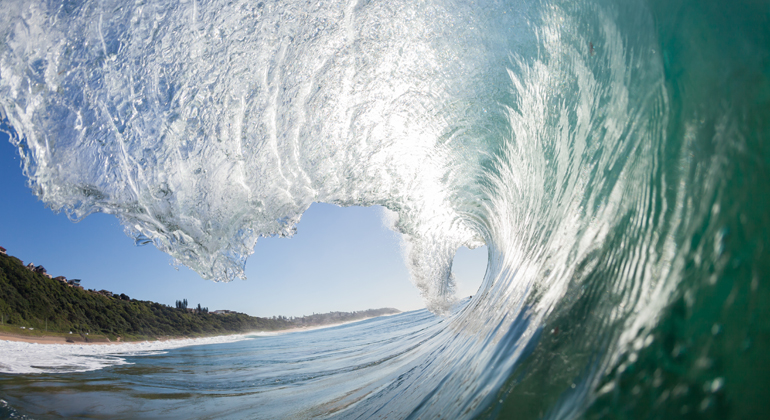
People and the Ocean 1.0: The ocean is so vast, bountiful, and endlessly resilient, it is simply too big to fail.
For all human history and well into the late 20th century, the ocean‘s size, productivity, and resilience made it impossible for people to ever imagine depleting or disrupting it. In many places, fish were so abundant they sometimes leaped into the fishing boats. The 1960s general political mantra „Dilution is the solution to pollution“ reinforced the notion that anything we put into the ocean could not really affect it. The ocean was a seemingly endless source of food, minerals, oil, gas, and salt. And it was also a convenient repository for all kinds of wastes, for sewage, vehicles, garbage, toxins, military debris, and even nuclear waste.
People and the Ocean 2.0: The ocean is doomed. Massively and fatally polluted, deleted and disrupted, the ocean is too big to fix it.
Over the last few decades, the general attítude that the ocean represented an endless bounty and bottomless dump was gradually questioned. Scientists discoverd that human activities had fundamentally altered its chemistry, biology, and physical structure. One now often sees images of widespread coral bleaching, enormous plastic pollution, and even tumor-riddled sea turtles. In several regions fishery has collapsed, and illegal fishing threatens the livelihoods of millions of people. There is also increasing evidence that climate change is making the ocean warmer, stormier, more acidic, and oxygen-depleted. And in the long term there will be a drastically increasing sea level, with dramatic consequences for numerous cities and millions of people. What may make these trends ever more frightening, is that the situation of the ocean seems impossibly complex, the drivers too ingrained, the vested interests too powerful, and the available political options too limited to make a real difference. The common perception often is that the problems of the ocean are now so massive, and so complex that they are impossible to fix.
People and the Ocean 3.0: The ocean is so central to our future, it is too big and too important to ignore. If we heal the ocean, we can solve multiple global problems and heal ourselves. It is our path forward.
„Like a phoenix from the ashes“, the author says, „hope however is beginning to emerge and steer us away from the current dismal ocean narrative“ (p. 74). With these words Jane Lubchenco starts the last nine pages of her essay. These pages are full of facts, figures, and constructive visions – but too voluminous to be presented here. The essay is a must-read, a must-read also for the reader of this review. I personally declare it a master-piece, a high-light of this book.
Part Two of the book is on „Innovation and Technology“, with eight essays, some competing, some supplementing another. „From Red Lights to Green Lights“ is Daniel Esty’s plea for more innovation-oriented sustainability strategies. He deplores that environmental law and policy as framed in the 1960s and 1970s focused on „command and control“ regulatory strategies under which government told business (and also individuals) what they should not do. This framework, he says, has proven to be incomplete: „It has failed to offer signals as to what society needs business to do, including what problems to solve, what research to undertake, and what investments to make“. His conclusion therefore is straightforward; „We need to complement our system of red lights with an expanded set of green lights“. The author is clever enough not to generally condemn red lights but to look for adequate solutions – making red and green equivalent colors, shining different in different cases of decision-making. This would make careful policy design – balancing control and adequate incentives – obligatory. When it comes to meet the demands of the „sustainability imperative“, this may indeed be a big idea.
Some of the following essays are examples of the search for optimal technical innovations, other are more about the search for innovative policy solutions. There is for instance the essay on „Environmental Protection through Systems Design“. The authors deplore that our understanding of the environment has mostly been built on the scientific reliance on reductionism: Obtaining understanding through observation of what changes take place when modifying a single factor while holding all other factors constant. In practice, that very often ended in doing the right things wrong: Biofuels from food crops was such an example; water purification by hazardous chemicals was another, and so it was with solar panels using rare, toxic metals, and many other innovations. While a certain reductionism may be indispensable, integrated systems thinking is thought to be absolutely necessary.
To put systems-thinking into practice, the authors give a number of interesting suggestions: Brake down the media-based structures in our environmental ministries and agencies; establish a solutions orientation; use new tool boxes; collaborate across agencies. The final suggestion is, that through a systems framework that reflects the world we are striving toward, we can expect progress while minimizing negative trade-offs.
Because they are rather complex, I pass over the essays on „Genomics“ and „An App for That“ in silence. The essay on „Reimagining Solar Fuels to Power the Planet“ is very speculative, and so I thought to leave it to other reviewers. The essay on „Fostering Energy Innovation for a Sustainable 21st Century“ sounds more realistic, but the author is just following one fixed idea.
The next essay seems more promising. It‘s on “Building Climate Change Resilience by Design“. First of all, it is on climate change, the currently most debated environmental topic, and second it is on resilience, the most debated adaptation topic of the current Corona pandemic. Unfortunately, the author has a totally different perspective: She wants to talk about our „built environment“, especially the material infrastructure, and she wants to make it resilient.The necessary shift in perspective she describes is rather „green“: „Back to nature – using history to guide future development“ is the first suggestion; „Imagining green schools“ is the next; followed by „building floodgates into infrastructure“ and „integrating water into urban form“. The sad point in the story is, that if climate change develops as projected, and the sea-level is rising as expected, the results may come very close to what is debated in this essay: disaster.
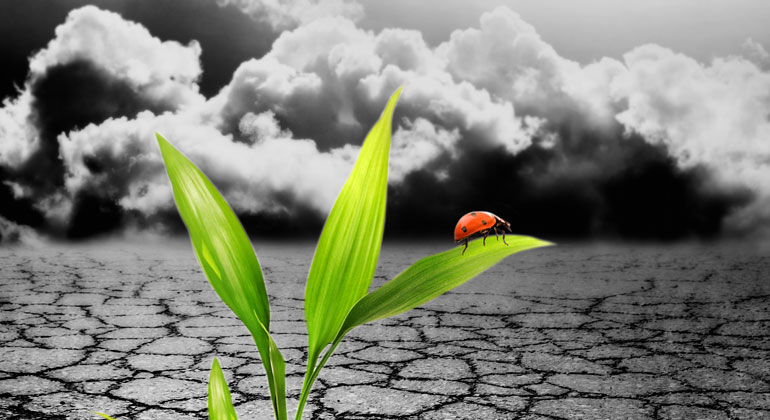
The last essay in Part Two is on „Bracing for Impact“ – Transforming the National Weather Service for the Climate Change Challenges Ahead“. The number of articles on the difference between weather and climate goes into the millions. But the chance to make a weatherman (or weatherwomen) into a climatologist is close to zero. Still, there is a good point made in the essay: „The United States is weather-ready“, but the „United States is not climate-change-ready“ (p.146).
Part Three of the book is on „Law and Policy“, the part I had been waiting for. It has eight essays, some highly expected, and one a big surprise (and personally a challenge).
„Building Public and Political Will for Climate Change Action“, that is, no doubt, a major task in all parts of the globe. The author calls it a „massive collective action problem“ (p. 155), and declares the „public will“, expressed through citizen activism, the most important influence of the policy-making process. He describes the conditions for „windows of opportunity“, mentions the different public forums within a population and their motivations to reduce global warming, quotes traditional environmental groups like the Sierra Club – but, to my great surprise, finds no word for the young generation, and the globally active „Fridays for Future“ movement.
„Broadening Action on Climate Change“, this is an essay in which the strengths and the weaknesses of the Paris Agreement on climate change of 2015 are being carefully considered, and the weaknesses prevail. Therefore, the author looks at the possibilities of other international regimes to „help out“: most significantly, the Montreal Protocol, and The World Trade Organization, but also sectoral regimes like the International Civil Aviation Organization, the International Maritime Organization which have started making a (somewhat) „greener sector“.
In terms of financial assistance to developing countries, the picture is mixed. The „Green Climate Fund“ has had a somewhat rocky start, but is now about to deliver funding for both mitigation and adaptation. The author, however, is right in saying that this type of funding, in contrast to the high promises made, is but a drop in the bucket compared to the overall financial flows that need to be „greened“.
A more drastic reform of climate policy is presented by William Nordhaus, the Nobel Prize winner of 2018, in his short, two-page essay on „International Carbon Pricing“. The most effective incentive for change in his view is a high price for carbon. As a means of projecting carbon pricing into the international space, he proposes a „climate club“. The notion is that one can overcome the syndrome of free-riding by adopting the club model rather than the voluntary, nationally determined contributions (NDCs) foreseen in the Paris Agreement. A climate club is an agreement in which nations would be penalized if they did not meet their obligations. Unfortunately, the international community is a long way from adopting the climate club model, most discussions are still focused on the doomed voluntary model.
In this part of the book there are more interesting essays, such as „The Role of Climate Change Litigation“ and „Deploying Machine Learning for a Sustainable Future“. But I would like to leave those to the discreet reader. Instead, I must refer to an essay that was a great shock to me: „The Case of Fracking“.
Its author, an expert of hydrology, cites science as his foundation for policy advice. On basis of his private engagement in the development of the fracking industry in the state of Pennsylvania, he blows the trumpet for more fracking in the future and in other regions. He seems to know the manifold environmental effects and damages of that technology very well, but is of the opinion that everything can be handled on the basis of careful use of given science. But his real problem is different, and concentrated in a sentence he uses as his private mantra:“We may be stuck with oil and gas – and the technologies that produce them – for the foreseeable future“ (p. 219). No, Sir, we need not be stuck – alternative science is here, and alternative technologies exist, to free us from self-inflicted prison.
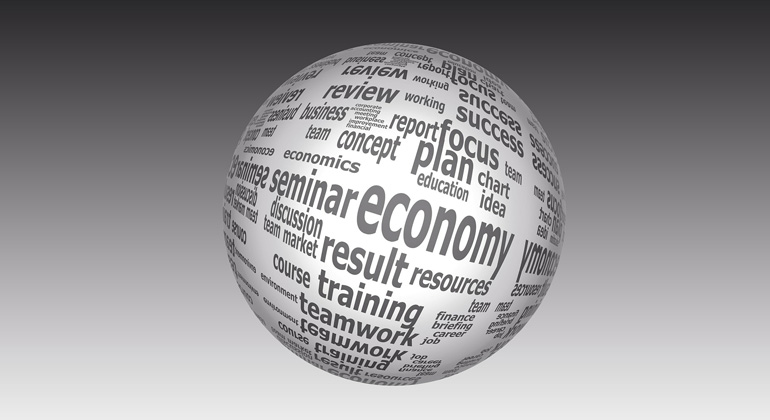
Part Four is on „Resources, Economics, and Sustainable Business“, with six essays. The text on „Next-Generation Corporate Sustainability Leadership“ understands the first word of the chapter‘s title in a special sense, as personal and personell resources. The essay reflects on the American history of non-regulatory path-ways to progress, the extraordinary promise, today, of stronger accountability between investors and corporations, the need to transform whole sectors and to begin to secure the next generation of regulatory and governance frameworks needed.
After investigating the progress and the limits of voluntary initiatives and the emergence of broader platforms, the view goes on the new rewards and accountability for progress made, the improved reporting with rating tools, like the Dow Jones Sustainability Index, and the way from better reporting to better governance. The main conclusions are that today’s shareholders and investors increasingly expect early disclosure of long-term risks due to climate change, and more regularly discuss the issues of emerging environmental risks. In turn, the author expects corporate leaders to increasingly disclose the long-term risks of climate change and environmental damage, with „sustainability committees“ providing credible oversight, and work pro-actively to secure governance systems to reduce their business risks, and the risks to society at large. „Wishful thinking“ – or future reality?
„Making Companies Work for Society“ is the closely related essay that follows, but starts with a view on rather unfriendly take-overs and aggressive mergers in the American economy. Over the last 50 years, the perception of the role of companies has shifted dramatically toward a vision of companies as agents for wealth generation, more specifically, wealth generation for their shareholders. This notion of shareholder primacy gained enormous traction in the 1970s when Milton Friedman argued that a corporate executive is „an agent serving the interests of his principal“.
Shareholder primacy stands, however, in stark contrast to sustainable finance.
The tension between shareholder primacy and sustainable finance models has become acute over the last decades as a result of two trends: There is a growing awareness among companies that they need to address environmental as well as social challenges. The second trend arises from the growing awareness that shareholder primacy increases the gap between the wealthy and the poor. Given these trends, some commentators write off sustainable finance as a „dream“. The author, however, believes that we may be close to a system of sustainable finance, driven by external and internal factors.
As this topic seems to be rather speculative, the next one comes down to earth: „Waste and Materials Management“. Many Americans have grown up with basic waste management principles:“ reduce, reuse, recycle“. Yet, over half of what was generated in homes and businesses ended up in landfills. In the future, waste and materials policy should seek to preserve, rather than throw away, the materials and energy that go into the products used. Fortunately, we now see many environmentally minded firms pioneering new material management strategies and models that create value through re-use, repair and re-manufacture. The author goes into details as regards possible future developments. For many countries, achieving better recycling and waste disposal would translate into significant benefits for human health and the natural environment. For the United States, he thinks, the focus should be on re-imagining the top rungs of waste hierarchy, and that includes quite a few points of improved information and better management. Unfortunately, however, he fails to present a convincing model of a „Zero Waste Society“ – for America, and the World.
With the next essay we come closer to the title of the book. The question is: “Can we Define Planetary Boundaries on the Human Use of Materials“? If not, we should certainly try. The author first refers to the work of Johan Rockström and colleagues who attempted to define the safe operation space for humanity with respect to the Earth system, and in 2009 proposed the concept of „planetary boundaries“. Their focus was on the planet‘s biophysical subsystems, and they defined „safe operation spaces“ for several global metrics, such as greenhouse gas concentration, water use, and biodiversity loss. They then delineated a structured progression of steps to evaluate human impacts on the environmet: a „safe operation space“, a „zone of uncertainty“, and a „zone of danger“. This concept captured the imagination of the science community and actively stimulated the debate in environmental politics.
With this framework as starting point, how might this concept be applied to the ever increasing human use of materials? The author suggests first, choosing the materials or material groups important for human activities, identifying potential rates of demand over time for those materials, and specifying „safe operating demand“, „zones of uncertainty“, and „thresholds of high-risk demand for each“.The intent of this exercise would be to define levels of materials use that are sustainable over the long term, while simultaneously permitting progress toward realizaion of the UN-initiated „Sustainable Development Goals“ (SDGs).
Right away, the author establishes a list of „potentially critical“ materials, containing six groupings, including (a) those materials used most widely, (b) those with lower use rates but that appear crucial in enabling sustainable technologies, and (c) those for which processing and product fabrication result in heavy environmental impacts. The author instantly realizes that this is not only a „big idea“ but also requires a complex research strategy. He ends with some strong words: “Given anticipated trends in economic development and its high materials dependence, establishing planetary boundaries for materials would seem to be imperative“ (p. 265). Is this simultaneously the way toward a sweeping de-materialization of the economy? The author, unfortunately, does not take up this question – and so misses a „big“ idea.
The next essay in this part picks up views developed in the first part the book, the role of natural capital, equity, and the sustainable development challenge – and is suggested to be read separately.
Part Five, the final part, is on „Society, Equity, and Process“, with altogether ten essays. It is the longest but for me the weakest part of the book. In some of the essays it‘s difficult to find out whether the ideas presented by the authors could really be big at all; others are at least interesting to read. Therefore, in a short overview, I shall now try to find a „big“ idea and, if not successful, to hint at some missing questions.
What is „Hip-Hop Sustainability“? It could perhaps be a big idea, if there were many hip-hoppers around. Is that so, modestly asked? „Driving Systems Change through Networks“, that is what already exists in many forms. But how is it, that „Fridays for Nature“ is not quoted here as one of the globally successful networks? „Moral and Spiritual Contributions to a Flourishig Earth Community“ that, at least theoretically, is a big idea, when thinking of Pope Francis, but not of the Catholic church. Buddhism could be one, if thinking of the Dalai Lama, but not of the migration policy of the current military rulers in Myanmar. In the US, „green religion“ has been growing, but relevant authors on this phenomenon are not cited in the essay at hand. „Environmental justice“ is a big idea, no doubt. But is it really relevant for public health science or for environmental protection? On a threatened planet „Preparedness for Natural Disasters“ should of course get higher priority: full-stop! Most cases of serious environmental problems are created in urban areas, and therefore re-imagining city and its parks are in full swing, recently under the imaginative heading of „Resilient City“. Literature on such efforts, however, I found missing. And then there is the essay called „From Static to Adaptive Environmental Policy“, which I found disturbing. There are many blockers and many actual blocks in practical environmental policy, no doubt, but in my life I have always found environmental policy as being on the move; I am even tempted to say, that there is no other field of politics that is as flexible. And that is so, because environmental consciousness is growing day by day.
„Why Big Ideas so Often Fail“ is the last essay of the book, essay Nr. 40. Astonishingly, it is written by three youngsters. This I found daring but very interesting at the same time. I could agree to nearly every point made, and there is a statement that I loved very much; „Big ideas, by their nature, rally attention to urgent problems of seemingly universal significance. Their scale and audacity make them compelling – but also vulnerable to failure. The best way to avoid … pitfalls is to be aware of them and plan for them in problem diagnosis, project design, and implementation“ (p. 367).
Coming to the close of a rather long review of an important and voluminous book, I would like to end with a compliment and a „big“ wish: 33 of the 53 authors are professors or graduate students of Yale University; this indicates a high potential to make Yale „the“ environmental university of America. This to happen, however, may require additional personell and expertise in the field of economics and political science. Preparing then for another book to „Save the Earth“ might necessitate extending the perceptions of the authors: for instance regionally, to the European region, to the new regional groupings in the Pacific area, and toward the late-comers in Africa and Latin America.
I would like to end in saying, that in Part Five on „Society and Equity“ I had expected contributions on where the American society, individual countries and the international community stand, and where they intend to go. In environmental policy, there are forerunners, latecomers, remainers, and those even blocking any progress. Why is this so, and what would be needed to make progress?
On the international level, a milestone of environmental policy was the United Nations Conference on Environment and Development (UNCED) in 1992, with its „Rio-Declaration“ of 27 principles, the „Agenda 21“, the establishment of the Commission on Sustainable Development (CSD), and the United Nations Environment Programme (UNEP), and the subsequent installation of three UN-Conventions: on Climate, on Biodiversity, and on Desertification. The global forestry problem at that time was also on the agenda, but till today remains „unfinished“ business. The United States never made close friends with these UN environmental activities, but they still exist, have some, though different success, are important for international understanding – and should be developed further. In a book by American authors one would like to have read something on these UN activities – not only on the issue of whether or not transforming the rather weak UNEP into an effective World Environment and Develoment Organization (WE-DO). Does forgetting the United Nations make for a better planet?
Concluding remarks:
The readers of this rather long review might ask whether the story of „a better planet“ could not have been told in a totally different way. Well, a lot could be said here and many books could be quoted for that. To make the answer short and private, I would like to present a personal view: my ideas for an environmentally sound, sustainable future in the shortest possible way, not in form of two fundamental imaginations, as John Lennon once proposed, but as four conrete strategic projects.
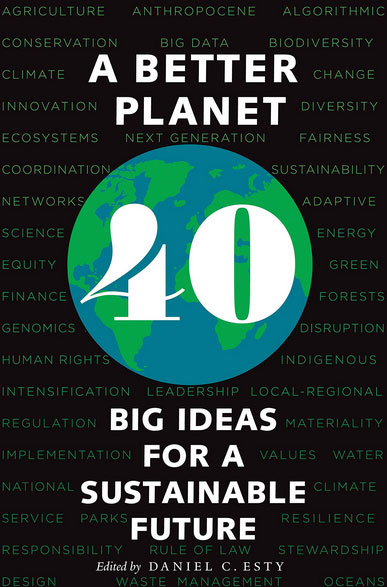
Taking into regard UN General-Secretary Antonio Gutteres‘ recent declaration: „The state of the planet is broken“, it seems to me that there is, first, the need for a comprehensive Re-Naturalization of planet Earth. There is, second, the need for a De-Carbonization of the energy systems to prevent climate catastrophe. There is, third, the need for a De-Materialization of economy and society to respect planetary boundaries and to prevent physical break-down. And as all this needs sweeping system change there is, fourth, strong need for a peace-devoted Earth System Governance.
In a certain way, this four-parts-focus on the issue of global sustainability is reflected in several of the 40 ideas presented in the book – at its best in the first Part on nature, land, and water. On de-materialization I found nothing special, and on system change nothing systematic was presented. On the issue of climate change and de-carbonization there were many interesting texts; the most challenging to my mind was the two-page paper of the Nobel Prize winner, William Nordhaus, who doesn’t trust the voluntary arrangements of the Paris Agreement and favours instead a strictly ruled „Carbon Club“.
- Daniel C. Esty (Ed.) “A Better Planet. 40 Big Ideas for a Sustainable Future” (New Haven and London: Yale University Press 2020)
Source
Dr. Dr. h.c. Udo E. Simonis is Professor Emeritus of Environmental Policy at the Berlin Social Science Center (WZB) 2021
